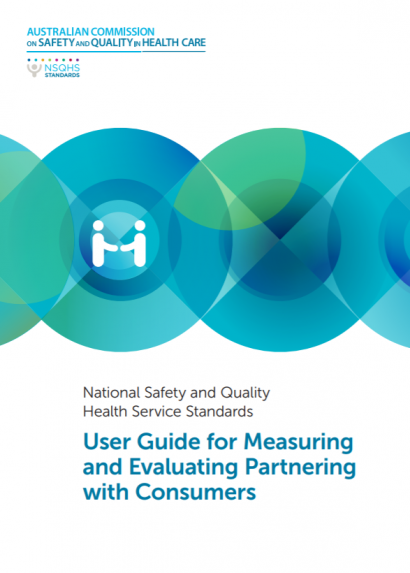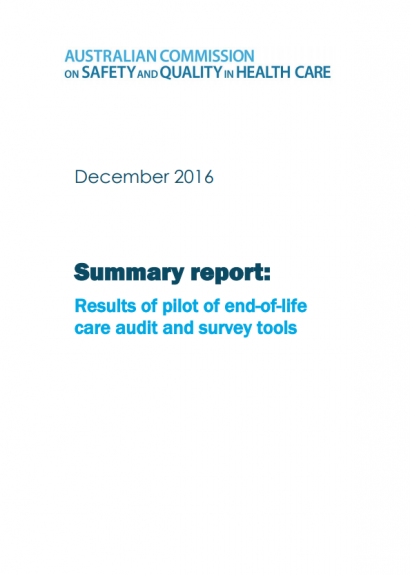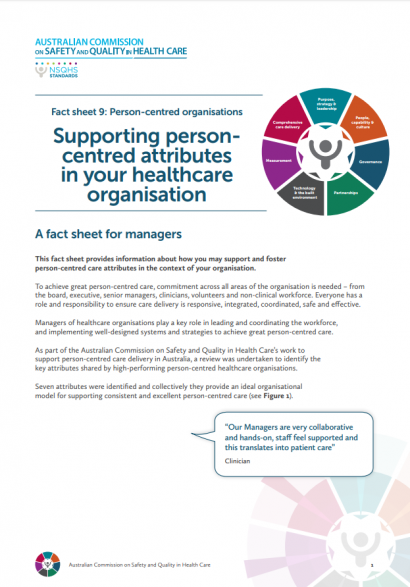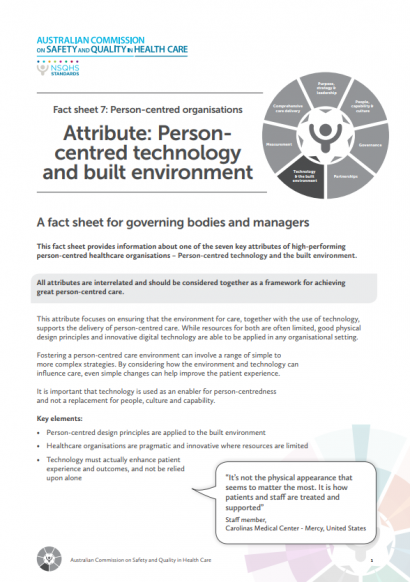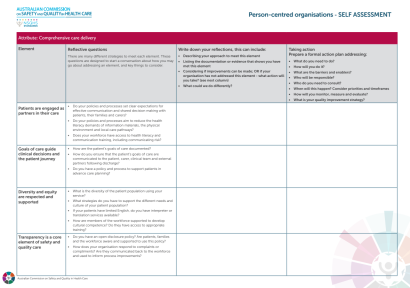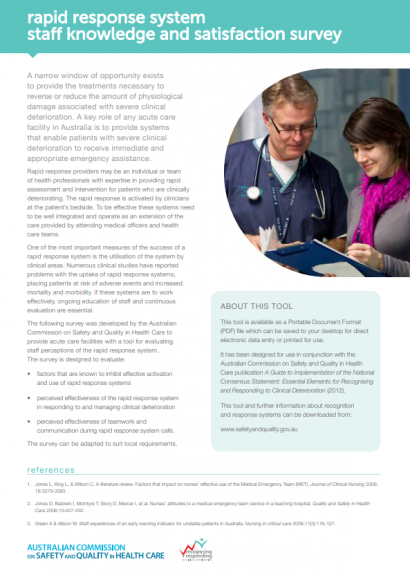Consumers are partners in the design and governance of the organisation.
Health service organisations communicate with consumers in a way that supports effective partnerships.
Systems that are based on partnering with patients in their own care are used to support the delivery of care. Patients are partners in their own care to the extent that they choose.
Systems are designed and used to support patients, carers, families and consumers to be partners in healthcare planning, design, measurement and evaluation.
Leaders of a health service organisation develop, implement and maintain systems to partner with consumers. These partnerships relate to the planning, design, delivery, measurement and evaluation of care. The workforce uses these systems to partner with consumers.
The portal has guidance, tools and resources to support the core skills for communicating for safety. It links to, and supports, work undertaken by Australian health service organisations in the areas of clinical communication and can be used as a resource for further learning.

